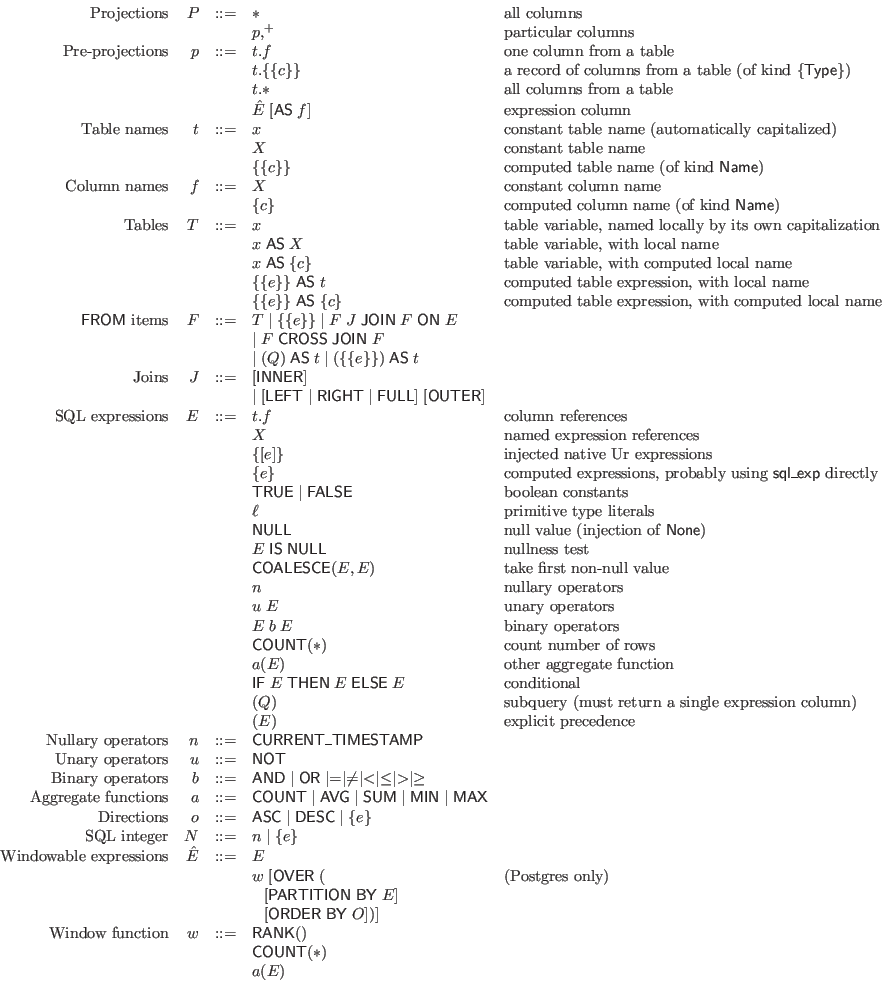Queries ![]() are added to the rules for expressions
are added to the rules for expressions ![]() .
.
![\begin{displaymath}\begin{array}{rrcll}
\textrm{Queries} & Q &::=& (q \; [\math...
...OM} [()] \mid \hat{E} \; [o] \mid \hat{E} \; [o], O
\end{array}\end{displaymath}](img547.png)

Additionally, an SQL expression may be inserted into normal Ur code with the syntax
![]() or
or
![]() . Similar shorthands exist for other nonterminals, with the prefix
. Similar shorthands exist for other nonterminals, with the prefix
![]() for
for
![]() items and
items and
![]() for pre-queries.
for pre-queries.
Unnamed expression columns in
![]() clauses are assigned consecutive natural numbers, starting with 1. Any expression in a
clauses are assigned consecutive natural numbers, starting with 1. Any expression in a ![]() position that is enclosed in parentheses is treated as an expression column, rather than a column pulled directly out of a table, even if it is only a field projection. (This distinction affects the record type used to describe query results.)
position that is enclosed in parentheses is treated as an expression column, rather than a column pulled directly out of a table, even if it is only a field projection. (This distinction affects the record type used to describe query results.)